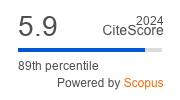Article | Open Access
Does Digital Media Use Harm Children’s Emotional Intelligence? A Parental Perspective
| Views: | 21051 | | | Downloads: | 8907 |
Abstract: Emotional intelligence (EI) is comprised of a set of critical life skills that develop, in part, through practice in social interaction. As such, some have expressed concern that the heavy screen media diet of today’s youth threatens the development of those crucial abilities. This research assesses how the media diet of children and the media use of their parents relates to child EI levels to assess what, if any, specific patterns exist. Four hundred parents of children aged 5–12 reported on, among other variables, their child’s EI, empathy, and emotional regulation skills along with their child’s various digital and non-digital media use, and non-media activities. Parental EI, screen use, media emotional mediation, and media co-use with their children were also assessed. Analyses revealed no significant relationships between child EI and screen use of any kind, though reading positively associated with child EI. Especially interesting, children whose parents used their mobile device more frequently in the presence of their child had lower EI, and parents who engaged in emotional mediation around their child’s media use reported higher EI levels in their children. These findings suggest that concerns about children’s digital media usage are perhaps overblown in terms of impeding emotional skill development. Further, and especially critical, parents’ own media-related behaviors around their children could have significant impact on child EI development.
Keywords: children; digital media; emotional intelligence; mediation; mobile media; parenting; screen use
Published:
© Robin L. Nabi, Lara N. Wolfers. This is an open access article distributed under the terms of the Creative Commons Attribution 4.0 license (http://creativecommons.org/licenses/by/4.0), which permits any use, distribution, and reproduction of the work without further permission provided the original author(s) and source are credited.


